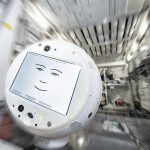The application deadline for interested individuals is set for Tuesday, April 2.

NASA has opened applications for individuals interested in participating in its upcoming simulated one-year Mars surface mission. The mission, known as CHAPEA (Crew Health and Performance Exploration Analog), is the second of three planned ground-based missions and is scheduled to commence in the spring of 2025.
During each CHAPEA mission, a four-person volunteer crew will reside and work inside a 1,700-sqft, 3D-printed habitat located at NASA’s Johnson Space Centre in Houston. Dubbed the Mars Dune Alpha, this habitat is designed to replicate the challenges of a real Mars mission, including resource constraints, equipment malfunctions, communication delays, and other environmental stressors. Crew responsibilities encompass a variety of tasks such as simulated spacewalks, robotic operations, habitat upkeep, physical exercise, and cultivation of crops.
NASA is specifically seeking healthy, motivated US citizens or permanent residents aged between 30 and 55, who are proficient in English to facilitate effective communication with fellow crew members and mission control. Ideal candidates should possess a strong inclination towards unique and rewarding experiences, coupled with a keen interest in contributing to NASA’s endeavours in preparing for human exploration of Mars.
The application deadline for interested individuals is set for Tuesday, April 2.
The selection of crew members will adhere to standard NASA criteria for astronaut candidates. Eligible applicants must hold a master’s degree in a STEM field such as engineering, mathematics, biological, physical, or computer science from an accredited institution, along with at least two years of professional STEM experience or a minimum of one thousand hours of piloting an aircraft. Additionally, candidates who have completed two years of doctoral studies in STEM, obtained a medical degree, or undergone a test pilot programme will also be considered. Applicants with four years of professional experience, military officer training, or a bachelor’s degree in a STEM field may also qualify.
Compensation will be provided to participants selected for the mission, with further details to be disclosed during the candidate screening process.
NASA’s CHAPEA missions play a crucial role in gathering scientific data to validate systems and develop solutions for future Mars expeditions, as the agency works towards establishing a sustained presence for scientific exploration and discovery on the Moon through its Artemis campaign. Leveraging insights gained from ongoing simulated missions, NASA aims to enhance crew health and performance support for upcoming Mars missions.
Under the broader scope of NASA’s Artemis campaign, the agency is dedicated to laying the groundwork for sustained scientific exploration on the Moon, culminating in historic milestones such as the first woman, first person of colour, and first international partner astronaut landing on the lunar surface, while simultaneously preparing for human missions to Mars for the advancement of humanity as a whole.
















































































